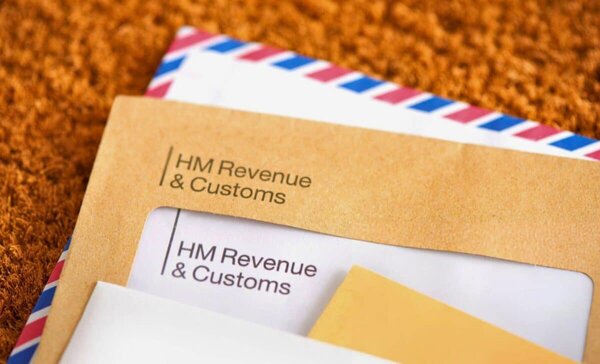Let’s Break This Down Together...
Not sure where to send your EIS claim form, or even what it is?
If you’ve recently invested in a company under the Enterprise Investment Scheme (EIS), you may be entitled to up to 30% income tax relief. But claiming it can feel confusing, especially when forms, deadlines, and HMRC rules start piling up.
Don’t worry. This guide walks you through exactly what an EIS claim form is, how to submit it correctly, and how to avoid common mistakes that delay your refund. Let’s make sure you get what you’re owed, quickly and confidently. Let’s go!
Claiming tax relief on your Enterprise Investment Scheme (EIS) investments should be straightforward.
However, sending your form to the wrong place can delay your claim by months or even cause rejection.
Our tax specialists at Pie tax help hundreds of investors maximise their EIS tax benefits every year. Or if you're just here to get to grips with it all, let's break it down!
Where to Send EIS Claim Form: What's an EIS Claim Form Anyway?
When you invest in qualifying companies under the Enterprise Investment Scheme, you’ll receive an EIS3 certificate.
An EIS qualifying company is one that meets HMRC’s specific criteria for the EIS scheme, such as being a small, high-growth business that satisfies the scheme’s requirements. This document is your golden ticket to claiming up to 30% income tax relief on your investment.
The company sends this certificate, known as an EIS certificate, after HMRC confirms their eligibility for the EIS scheme and that your investment qualifies. You’ll need this document to make your tax relief claim, so keep it safe.
Different forms exist depending on when you invested. Most investors receive an EIS3 for initial investments, while an EIS5 form might arrive for additional shares.
Each certificate relates to a specific underlying company, or, in the case of EIS funds, multiple underlying companies. Each investment is identified by a unique investment reference, which links your records to the relevant company or companies.
To unlock these substantial tax reliefs, you must claim income tax relief and claim tax relief using the EIS certificate. You can receive income tax relief if your investment qualifies under the EIS scheme.

A Quick Introduction to EIS (Enterprise Investment Scheme)
The Enterprise Investment Scheme (EIS) is a UK government initiative designed to boost investment in early-stage, high-growth companies. By offering substantial tax reliefs, EIS encourages individuals to support innovative businesses that might otherwise struggle to attract funding.
For investors, the scheme delivers a powerful combination of income tax relief, capital gains tax deferral, and inheritance tax relief—making EIS investments a smart choice for those looking to reduce their tax liability while backing the next generation of UK enterprises.
With EIS, you can claim up to 30% income tax relief on the amount you invest in qualifying companies, directly reducing your income tax bill for the relevant tax year.
The scheme also allows you to defer capital gains tax on profits from other assets if you reinvest those gains into EIS-eligible shares. On top of that, EIS shares can qualify for inheritance tax relief, helping you pass on wealth more efficiently.
To unlock these substantial tax reliefs, you’ll need an EIS3 form from the company you’ve invested in. This certificate confirms that your investment meets the requirements of the Enterprise Investment Scheme and is your key to claiming EIS tax reliefs with HMRC.
Who Can Claim? EIS Investments and Eligibility
EIS investments are open to UK taxpayers who put money into companies that meet strict qualifying criteria.
To be eligible for EIS tax reliefs, the company you invest in must be unquoted, have gross assets below a set threshold, and operate in a trade approved by HMRC. These rules are designed to ensure that EIS supports genuine early-stage businesses with growth potential.
As an investor, you can claim EIS tax reliefs on up to £1 million of investments each tax year, or up to £2 million if you invest in knowledge intensive companies.
If you don’t use your full allowance, you can carry back relief to the previous tax year, helping you maximise your tax efficiency. Understanding the eligibility rules for both companies and investors is essential to ensure your EIS investments qualify for the valuable tax reliefs on offer.
Before you claim EIS tax relief, always check that the company’s gross assets and business activities meet the scheme’s requirements. This way, you can be confident that your investment is eligible and that you’ll receive the full benefit of the EIS tax reliefs available.

Where to Send Your EIS Claim Form to Claim EIS Tax Relief
If you complete a Self Assessment tax return each year, you can submit your claim as part of this process. Simply include the details in the “Additional Information” pages of your return.
For PAYE taxpayers not filing Self Assessment, send your EIS3 certificate to your usual HMRC tax office, and make sure to include the claim form attached with your submission. Check your latest PAYE coding notice if you’re unsure which office handles your affairs. HMRC may adjust your tax code or PAYE tax code to reflect the relief.
Alternatively, send your EIS3 certificate separately to HMRC Self Assessment at BX9 1AS. Remember to include your National Insurance number and UTR, which serve as your investor tax reference, on all correspondence.
For online Self Assessment users, enter the EIS details in the “Additional Information” section. Keep the physical certificates safe, as HMRC might request them later. If you submit a paper tax return, you should attach the EIS3 and claim form.
If you are due a refund, HMRC can pay it directly into your bank account.
When to Submit Your EIS Claim
Timing matters with EIS claims. You have up to five years after the 31 January following the tax year of your investment to make your claim.
Most investors include their EIS claims in their Self Assessment return for the relevant tax year. You can claim for the same tax year as your investment, or, if eligible, carry back relief to a previous year or earlier tax year.
If claiming for a previous tax year, you’ll need to amend your tax return if within the amendment window. Claims can be made for previous tax years within the allowed window. This is usually 12 months after the filing deadline.
For older claims still within the five-year limit, write to HMRC directly. Note the importance of the tax return deadline for making or amending claims. Provide all relevant details from your EIS3 certificate.
Last year, I helped a client recover nearly £4,000 in tax relief by identifying an unclaimed EIS investment from three years prior. The relief was still available within the time limit.
Getting Your EIS3 Form Right
Always double-check you’ve completed all sections correctly. Missing information is the top reason for delayed processing. Accuracy is crucial when claiming relief and claiming tax reliefs, as errors can delay or jeopardise your claim.
Include your UTR on all correspondence with HMRC. This unique identifier helps them match your claim to your tax record. The UTR is essential for tax relief claims and tracking the tax relief claimed.
Keep copies of everything you send, including the EIS3 certificate itself. A scanned copy is ideal, though a photo is better than nothing. Proper documentation is vital for claiming tax relief and claiming income tax relief.
Consider using recorded delivery when sending physical forms. The small extra cost provides peace of mind and proof of submission. This helps ensure your claim income tax process is smooth and verifiable.

Special EIS Tax Reliefs: Inheritance and Deferral Explained
Beyond the headline income tax relief, the Enterprise Investment Scheme offers two additional tax reliefs that can make a real difference to your long-term financial planning: inheritance tax relief and capital gains tax deferral relief.
Inheritance tax relief means that, provided you hold your EIS shares for at least two years and at the time of your death, their value can be passed on to your beneficiaries free from inheritance tax. This makes EIS investments a powerful tool for those looking to protect family wealth and minimise inheritance tax exposure.
Capital gains tax deferral relief allows you to defer paying capital gains tax on the sale of other assets by reinvesting those gains into EIS-qualifying shares. As long as your EIS investment remains eligible, the capital gains tax is postponed, potentially for many years, or even indefinitely if you continue to reinvest.
To benefit from these special EIS tax reliefs, you’ll need to meet certain conditions and follow HMRC’s claim process. These additional reliefs, alongside income tax relief, make EIS one of the most tax-efficient investment options available for UK taxpayers seeking to grow and protect their wealth.
Common EIS Claim Mistakes to Avoid
Sending your form to the wrong HMRC department is a classic error that can delay your claim by months. Always verify the current address before posting.
Forgetting to sign the claim form or omitting essential details like the certificate number can result in rejection or delays.
Missing the deadline is another common mistake. Set a reminder well before the five-year limit expires.
Some investors claim relief on the wrong tax year. Remember, you claim against the tax year in which you made the investment, not when you received the certificate. When reporting your investment, make sure to enter the actual investment amount, not the amount of tax relief you expect.
If you have paid too much income tax, you may be eligible for a refund. If you pay tax through PAYE, your tax code may be adjusted to reflect the relief.

Final Thoughts
Sending your EIS claim form to the right place is crucial for prompt processing. The correct destination depends on your personal tax situation.
Always keep copies of your EIS certificates and submission evidence. This simple step can save hours of stress if questions arise later.
EIS tax relief is generous but requires attention to detail. Getting your submission right first time means your tax relief arrives faster.
Pie tax: Simplifying EIS Investment Tax
At Pie tax, the UK's first personal tax app, we understand the frustrations of navigating EIS claims.
Our app automatically tracks your EIS investments alongside other income sources.
Our direct HMRC filing feature eliminates submission errors and delays that often plague paper-based claims. We'll even store digital copies of your EIS certificates securely in the app.
Curious to see how it works? Explore the Pie tax app today to discover how we can simplify your investment tax journey.
Your Step-by-Step Guide
Follow these easy steps to ensure your tax reliefs are accurately recorded for your self-assessment:
Open the Pie Tax App and find the 'Quick Add' button in the middle of the navigation bar.Click 'Quick Add' in the Navigation Bar

After clicking 'Quick Add', select 'Add tax relief' from the screen to open the options menu.Select 'Add tax relief'












